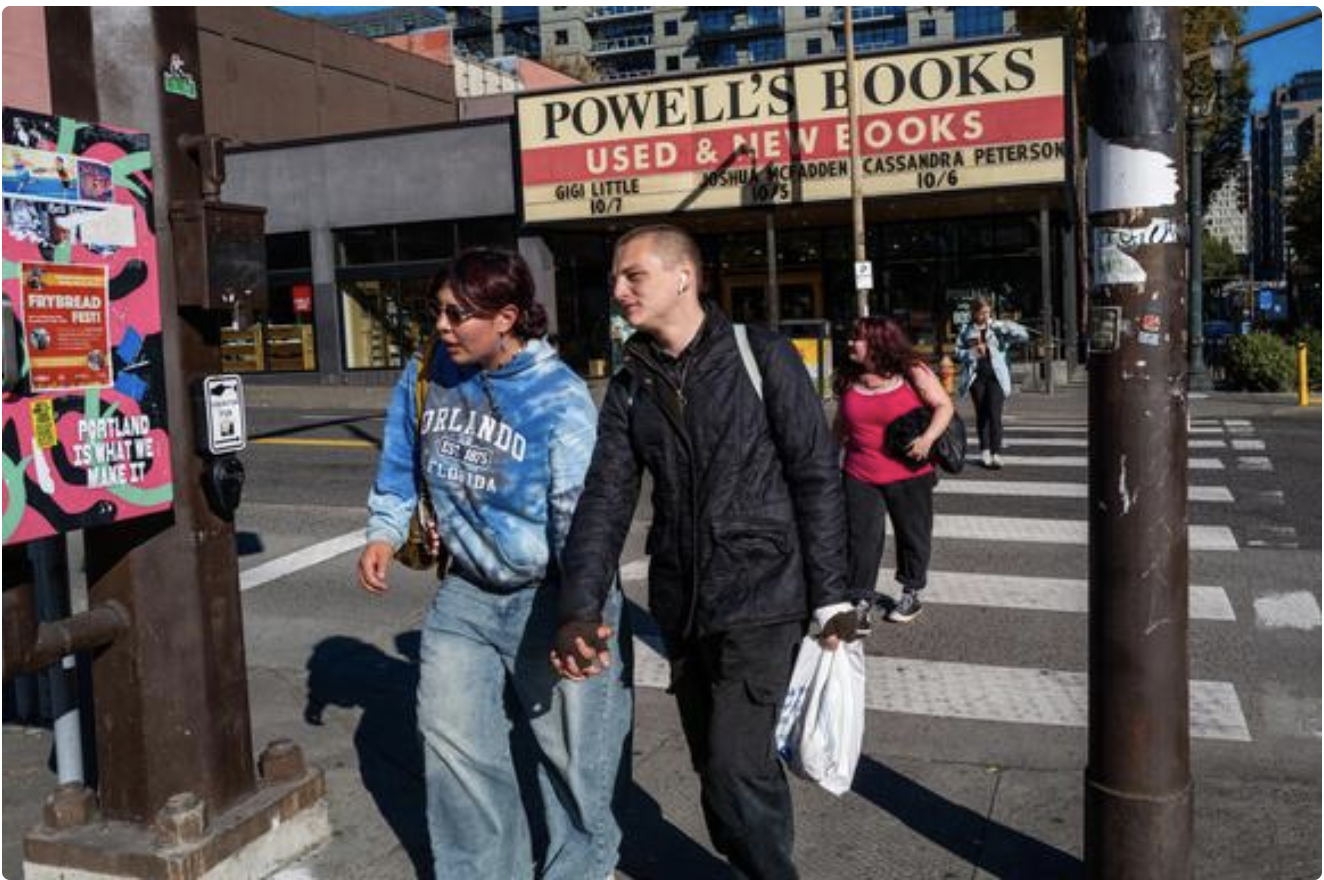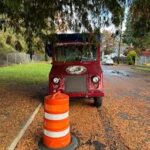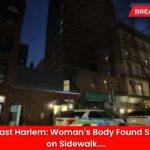Over the past weekend, Portland, Oregon, looked nothing like the dystopian war zone former President Donald Trump and his allies have repeatedly described. Instead, it was alive with community events—street fairs, art shows, concerts, and neighborhood gatherings. Families strolled through a fall produce market filled with apples and pears, music filled local parks, and over a hundred local artists showcased their work. In short, it was a typical weekend in a vibrant American city—not the “burning ruin” that Trump continues to portray.
Yet, this hasn’t stopped Trump, Stephen Miller, Kristi Noem, and others from peddling their false narrative about Portland. Their portrayal of the city as a chaotic wasteland overrun by violent “antifa extremists” is not only dishonest—it serves a darker purpose. These exaggerated depictions are designed to manufacture fear, justify authoritarian measures, and normalize the idea of a quasi-police state in America.
A Manufactured Crisis
In one of his more outrageous statements, Trump recently claimed Portland was “burning down to the ground.” The truth couldn’t be further from that. The only real chaos comes from the political theater orchestrated by Trump and his allies, who amplify isolated incidents to paint an entire city as lawless.
Also Read
A Washington Post report titled “Inside the online battles streaming from a single block in Portland” revealed how this distortion works. Much of the footage fueling right-wing outrage originates from a single block—specifically near the Portland ICE facility—recorded by activist journalists from both political extremes. Those videos, magnified by partisan media outlets, create the illusion of a city under siege. In reality, the unrest is geographically tiny and largely isolated.
The White House under Trump used such footage to justify sending federal agents into Portland in 2020 and to advocate for further National Guard deployments nationwide. The “Portland chaos” narrative was never about safety—it was about optics and control.
The Real Portland
Having walked Portland’s streets himself, the writer describes a city far removed from the nightmare Trump envisions. On a recent visit, he wandered from the Willamette River up through downtown to Powell’s Books—the city’s iconic literary landmark. The experience? Peaceful and uneventful.
There were small political gatherings, like a pro-Palestinian demonstration, but no violence, no chaos, and no threat. The “war zone” Trump spoke of simply doesn’t exist. The protests near the ICE facility, where most video clips originate, take place in an industrial pocket more than a mile south of downtown—a place few residents or visitors ever pass through.
Like any urban area, Portland faces challenges. But statistically, it’s far from dangerous. In fact, homicides in Portland have dropped by more than half in 2025 compared to the previous year—down from 35 to 17 in the first six months. That gives Portland a homicide rate lower than cities like Chattanooga or Winston-Salem and roughly equal to Oklahoma City.
Why Portland?
So why target Portland? Because it represents everything Trumpism despises—diversity, progressivism, environmental consciousness, and dissent from authority. The city is a symbol of liberal America, making it a convenient villain in the right-wing narrative.
Yes, Portland saw serious protests five years ago following the murder of George Floyd. Like many American cities, demonstrations occasionally turned violent. But those events have long since ended. Still, Trump and Miller insist the city remains in perpetual turmoil, feeding fear among their base and resentment toward those who question their agenda.
By demonizing cities like Portland, Trump builds a political justification for expanding federal control over local affairs—especially in places that vote blue. It’s a classic authoritarian tactic: exaggerate disorder, invoke fear, and promise “law and order” as the solution.
The Politics of Fear
The broader goal of this campaign isn’t simply discrediting one city. It’s about dividing Americans through fear. Trump’s rhetoric serves two distinct audiences.
For one group—liberals, immigrants, people of color, and LGBTQ+ communities—it fosters fear of government repression and policing. For the other—his political base—it fuels fear of those very groups, casting them as threats to “real America.” The result is a nation perpetually anxious, angry, and polarized.
This deliberate manipulation of fear is not just immoral—it’s dangerous. It undermines trust in democratic institutions, corrodes civil discourse, and paves the way for authoritarianism. When citizens begin to accept militarized policing as normal, democracy begins to decay.
From Lies to Authoritarian Impulses
Calling the U.S. a “police state” may sound extreme—but Trump’s impulses align disturbingly close. His attempts to deploy military force in domestic cities, his encouragement of violent crackdowns, and his demonization of dissent all reflect the instincts of autocrats, not democratically elected leaders.
While America’s institutions remain strong enough to resist outright tyranny, the warning signs are there. Trump’s Portland lies aren’t isolated—they’re a test case for how far disinformation can go in justifying the erosion of civil liberties. With a Supreme Court increasingly deferential to executive power, the boundaries of that authority could shift further than most Americans imagine.
The Truth About Portland—and America
Portland isn’t burning. It’s thriving—messy, creative, diverse, and imperfect, like any real city. But that truth doesn’t serve the political ambitions of those who rely on fear to consolidate control. Trump’s lies about Portland reveal not the city’s weakness, but his own craving for dominance.
The battle for truth, therefore, isn’t about one city’s reputation—it’s about the kind of country Americans want to live in: one grounded in reality and freedom, or one manipulated by fear and ruled through force.
The Portland lie is more than propaganda. It’s a blueprint for authoritarianism—one Americans cannot afford to ignore.












